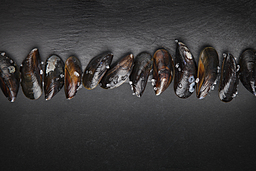Bioinspired Universal Surface Functionalization Method on Solid Substrates
TECHNOLOGY NUMBER: 2019-058

OVERVIEW
Reliable thin film method that produces very high densities of chemical groups on any surface- Based on a formulation that includes the use of dopamine, a 'sticky polymer'
- Provides a methodology that is reliable, reproducible, and cost effective
BACKGROUND
Immobilization chemistry is in high demand for solid-state biosensor platforms. Solid-state biosensor platforms refer to a class of biosensors that utilize solid-state materials, such as silicon, glass, or polymers, as the sensing element. These platforms offer numerous advantages over traditional biosensors, including higher sensitivity, improved stability, and compatibility with miniaturization for point-of-care applications. Even though various surface modification methods have been developed for subsequent immobilization chemistries, they often require a specific substrate material and are sensitive to fabrication conditions.
INNOVATION
Researchers at the University of Michigan have developed a mussel-inspired grafting method which can be used to attach various chemical functional groups to a wide variety of surface types. Possible surfaces include glass, polymer, and metal. The technology is based on a chemical formulation that includes dopamine, a known "sticky polymer" that resembles the essential components of mussel adhesive biopolymers. Used in combination with other polymers and chemical additives, the technique has thus far been demonstrated to produce surfaces with exceptionally high densities of amine- and carboxylic acid-terminated functional groups. This universal thin film coating and surface functionalization method is readily applicable to any solid substrate, having a great commercial potential to be adapted for various solid-state devices such as biosensors. The approach is reliable, reproducible, and cost effective.